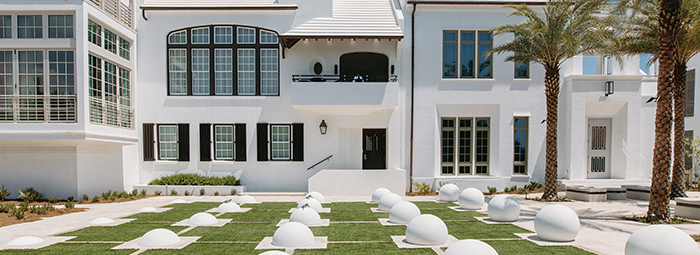
©2019 This excerpt taken from the article of the same name which appeared in High Performing Buildings magazine, vol. 13, no. 1.
About the Author
Allen Barnes, P.E., is president of Apex Engineering Group, formerly Anderson Engineers, Santa Rosa, Fla.
Florida residents are well aware of the dangers posed by the coastal environment. Rising sea levels, flooding from rain events or tidal surge, drought-induced wildfires, and high wind events, including hurricanes, must be taken into consideration for community planning and sustainable development designs.
In 2018, Hurricane Michael served only to highlight the importance of code-compliant design and proper building practices in the Florida Panhandle. Residents were forced to address the realities and catastrophic effects of these environmental forces firsthand as result of this hurricane. While the concepts of resilient design may have been considered a luxury for some prior to this storm, its necessity was brought to the forefront after surveying the extent of the damage to Bay County.
Forward-thinking design professionals and building officials understand the importance of a progressive building code—one that is adaptive to the intensifying environmental forces. Infrastructure must mitigate the changes on a macro-level, and homes and buildings must be able to adapt on a micro-level. The inadequacy of the older, generally accepted minimum building practices seems apparent after subsequent storm events.
While the initial first-order damage is certainly the most visible and visceral, the second-order effects on the community are just as devastating. The displacement of the vital working population, exodus of businesses and industry, disruption of essential services, the unavailability of affordable housing and the stunting of any positive community momentum all serve to further iterate the important unseen benefits of resilient design implementation.
Understanding the importance of these detrimental environmental forces and their lingering second-order effects, the Alys Beach community has collectively resolved to elevate the minimum acceptable design standards proactively by adopting resilient design standards for its infrastructure, buildings and ancillary structures.
Begun in the early 2000s, Alys Beach established a formalized process to codify its commitment to achieve its highest potential well before the community ever faced its first hurricane threat. These enhanced standards are enforced through high-level design reviews by pre-approved design professionals including architects, structural and civil engineers prior to community approval or submission for construction permitting. The town requires prescribed design compliance checkpoint reviews during construction in addition to those required by the Walton County Building Official. Tail-end build specification compliance reviews are also required by the office of the town architect via a formal as-built certification by the structural engineer of record at the completion of the build. This certification along with the original construction documents, checkpoint construction review summaries and all pertinent supporting documentation are reviewed for completeness by a third party and maintained within the community’s records after the project certificate of occupancy.
Infrastructure
At the onset of the community master-planning, Alys Beach placed importance on the utilization of the site’s natural topography and historical hydrologic features within the contiguous 158-acre site.
Gulf-front properties were platted to place buildable surfaces landward of the beach coastal construction control line, the protective geometric formation of the beach dune network and the ecologically sensitive coastal protection zone.
This placement was a design strategy to minimize the propagation of over wash flooding to the interior of the property by impinging waves. This included the improvement and protection of the beach frontal dunes and re-nourishment of the stabilizing vegetation thereon during initial construction and site development.
Read the Full Article